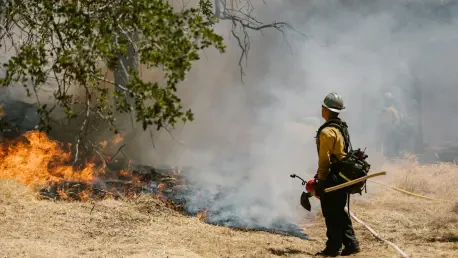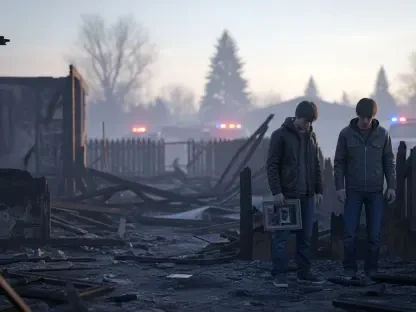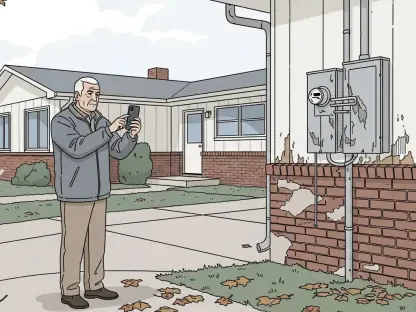In the realm of disaster management, where the stakes are constantly rising with every climate event, Simon Glairy stands out as a prominent expert. With a rich background in insurance and Insurtech, he has a particular focus on risk management and AI-driven risk assessment. Today, we delve into the complexities surrounding a recent lawsuit filed by 20 state attorneys general against FEMA, a decision intertwined with legal frameworks and the pressing needs of communities facing heightened climate threats.
Can you elaborate on the main reasons behind the lawsuit filed by the 20 state attorneys general against FEMA?
The lawsuit primarily focuses on challenging FEMA’s decision to shut down the Building Resilient Infrastructure and Communities (BRIC) program. The attorneys general argue that closing this program is not only detrimental but also illegal, emphasizing the critical role it plays in safeguarding communities against increasing disaster risks fueled by climate change. By focusing their legal challenge, they’re asserting that eliminating BRIC places millions of people at risk, by removing funding that has been crucial for disaster preparedness initiatives like floodwalls and pump stations.
Why do the attorneys general believe that shutting down the BRIC program is illegal?
The attorneys general position their argument on the grounds of constitutional and congressional mandates that obligate FEMA to aid states in disaster mitigation efforts. They contend that canceling BRIC undermines these obligations, challenging the legal grounds of FEMA’s decision. They’re underscoring that FEMA is required to provide certain supports as directed by congressional directives, which have been enshrined to ensure federal involvement in disaster risk reduction.
How does the BRIC program benefit local communities in terms of disaster preparedness and mitigation?
The BRIC program is instrumental in disaster preparedness because it provides competitive grants for state and local infrastructure projects aimed at minimizing the impact of natural disasters. Through these funds, communities have improved their resilience by building tornado shelters, floodwalls, elevated shelters, and other infrastructure designed to withstand severe weather events, giving both immediate and long-term benefits by safeguarding lives and properties during disasters.
Can you provide examples of specific projects that have benefited from the BRIC program in the past?
Certainly. Over the past four years, BRIC has allocated roughly $4.5 billion to more than 2,000 projects. Notable examples include the construction of protective tsunami shelters in Oregon and levee systems in Washington. These initiatives have been in development for years, reflecting the depth of community investment in planning and environmental reviews designed to fortify their localities against impending climate challenges.
What are some of the key arguments the lawsuit presents regarding the impact of climate change on the frequency and severity of natural disasters?
The lawsuit highlights the increasing severity and frequency of natural disasters due to climate change. It contends that, as the effects of climate change become more pronounced, the need for robust disaster mitigation programs like BRIC becomes even more critical. The attorneys general argue that shutting down BRIC exacerbates vulnerabilities across states, leaving them ill-equipped to handle the intensifying climate threats that manifest as more frequent wildfires and flooding.
How have communities already invested in projects that are now at risk due to the proposed cuts to the BRIC program?
Communities have invested millions in planning, permitting, and environmental reviews for disaster mitigation projects funded by BRIC. These investments reflect years of groundwork intended to fortify infrastructure against natural disasters. With the proposed cuts, these projects are now jeopardized, risking the potential waste of these substantial investments and the enhanced safety they were meant to deliver.
Can you discuss the potential impacts on specific states or counties, such as Oregon and Washington, due to the funding cuts?
In Oregon, funding for a major elevated shelter project designed to protect residents from tsunamis was slashed by nearly $14 million. Meanwhile, in Washington, plans for crucial levee construction were destabilized with the removal of $97 million in funding. These cuts place these states in a vulnerable position, exacerbating the risk of disasters where protective infrastructure would have significantly mitigated damage.
What are the constitutional and congressional arguments made by the plaintiffs regarding FEMA’s obligations to support disaster mitigation?
The plaintiffs’ arguments hinge on FEMA’s legal obligations to aid states in managing disaster risks. They point to constitutional principles and congressional legislation mandating FEMA’s involvement in disaster preparedness and mitigation. By dismantling the BRIC program, they claim FEMA is neglecting its duty to uphold these federal mandates, leaving states to face increased vulnerability without the promised support.
How has FEMA responded to the lawsuit and the accusations made by the state attorneys general?
FEMA has defended the cuts with a statement arguing that the BRIC program was misused to further unrelated agendas, particularly under the Biden Administration. FEMA claims that these efforts diverged from the program’s intended purpose of enhancing disaster resilience. They emphasize bringing accountability to spending and have expressed readiness to contest the lawsuit in court.
What are the significant concerns regarding the insurance industry in the wake of increased natural disasters?
The increasing disasters pose profound challenges to the insurance industry, driving up claims and strain. In states like California, wildfire losses, such as those from January events, predicted to cost over $45 billion, illustrate the financial pressure that might lead to shifts in insurance strategies, premium hikes, and possibly, restricted coverage.
How might these developments affect homeowners, especially in regions traditionally not prone to extreme weather events?
Homeowners in areas not typically associated with extreme weather now find themselves needing heightened insurance due to expanding disaster zones. The shift in risk profiles prompts an increase in premiums and coverage policies, pushing homeowners to reassess their insurance needs in light of the new environmental realities.
Can you explain the background on President Donald Trump’s plans or musings on shutting down or phasing out FEMA?
President Trump began his tenure with discussions surrounding the shutdown of FEMA, viewing it as inefficient. Recently, he contemplated its phasing out following hurricane season, spurred by dissatisfaction with its operations and aligning with his broader goals of reducing federal oversight. This has created uncertainty regarding FEMA’s future role amidst increasingly demanding disaster relief needs.
How have recent natural disasters, like the wildfires in Texas, influenced the rhetoric of officials regarding the future of FEMA?
Recent disasters have led some officials to reconsider FEMA’s standing. Following devastating wildfires in Texas, rhetoric has shifted from drastic shutdowns to talk of reforming FEMA. Homeland Security Secretary Kristi Noem’s statements suggest reimagining the agency’s structure and mission, aiming to better align with contemporary disaster management needs.
What are some proposed changes by officials like Kristi Noem concerning the future role and structure of FEMA?
Kristi Noem has proposed that FEMA be “redeployed in a new way,” advocating for a shift towards modernization to effectively meet present-day disaster recovery demands. This includes enhancing FEMA’s operational strategies and adapting its framework to integrate innovations that can better support state and local resilience efforts.
Do you have any advice for our readers?
In navigating these uncertain times, I advise readers to prioritize understanding their local resilience strategies, engage with community preparedness initiatives, and stay informed on policy changes that could impact their safety. Taking proactive measures in disaster preparedness is more crucial than ever to mitigate risks and secure peace of mind.









